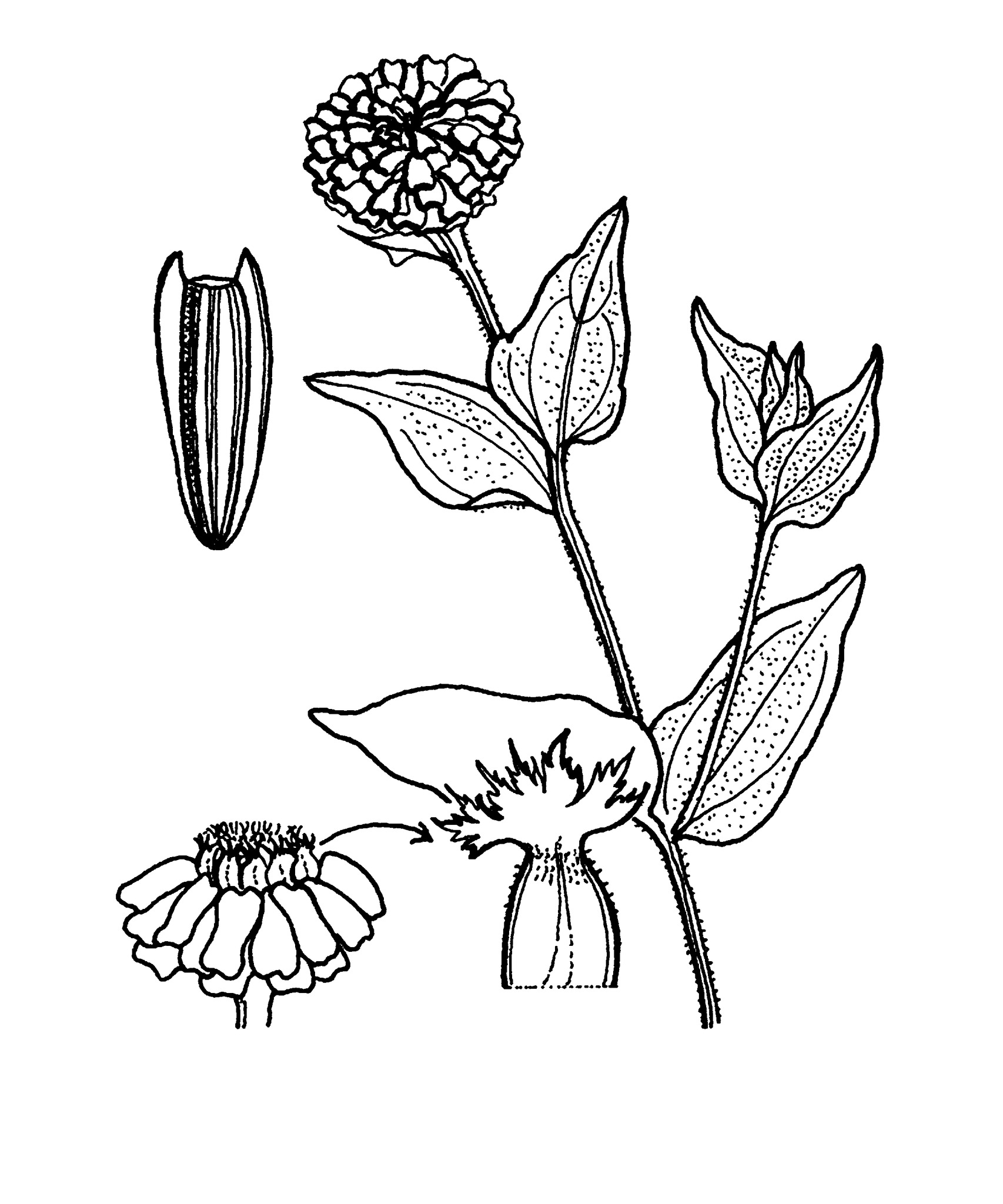
Annual herb to 1 m tall, hairy. Stems erect, branched. Leaves lanceolate to ovate, to 8 cm long, to 3.5 cm wide, more or less sessile. Capitula to 11 cm across; summer. Ray florets white, yellow, orange, pink, red or purplish. Disk florets yellow and black. Achenes compressed, to 6 mm long. Pappus absent.
Mexico
Most of the annual bedding plants are derived from this species, hybrids probably having Z. elegans as the dominant parent and one group with Z. angustifolia as the other parent.
Cultivars are extremely variable in habit (the compact dwarf forms are popular) as well as flower shape, colour and size. Recognised groupings include the Cactus- and Dahlia-flowered forms but there are many others.They are also available in a wide range of named seed mixes.
Source: (2002). Dahlia. In: . Horticultural Flora of South-eastern Australia. Volume 4. Flowering plants. Dicotyledons. Part 3. The identification of garden and cultivated plants. University of New South Wales Press.
